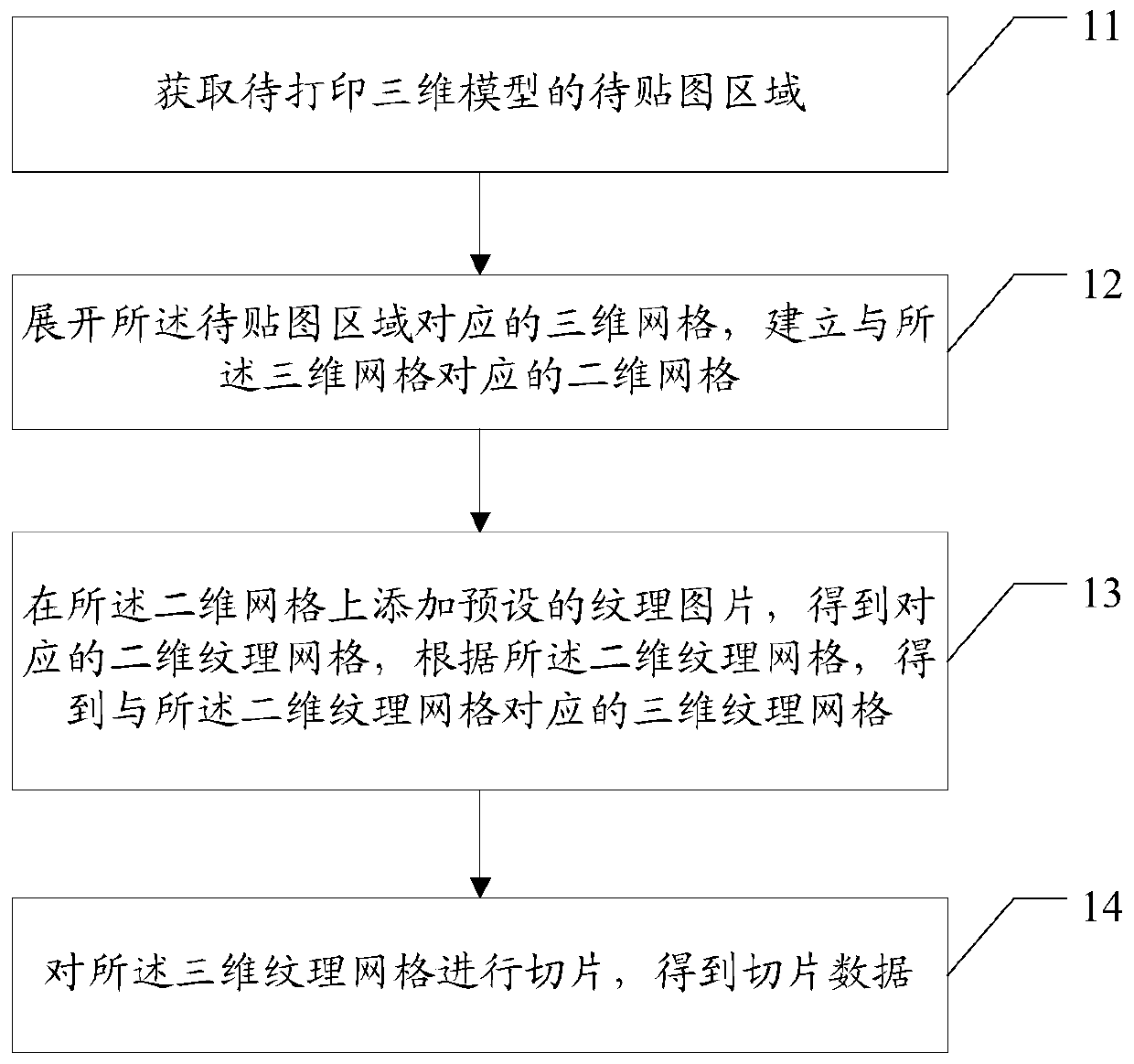Three-dimensional texture mapping method and device and computer readable storage medium
A three-dimensional texture and mapping technology, applied in the field of 3D printing, can solve the problems of high memory consumption, large amount of three-dimensional mesh data, and affecting the stability of image processing software.
- Summary
- Abstract
- Description
- Claims
- Application Information
AI Technical Summary
Problems solved by technology
Method used
Image
Examples
Embodiment Construction
[0026] As mentioned above, at present, when performing image processing on a 3D texture map, the generated 3D mesh data volume is large, resulting in large memory consumption and affecting stability.
[0027] In the embodiment of the present invention, the 3D grid of the to-be-mapped area of the 3D model to be printed is expanded to obtain a 2D grid, and a preset texture picture is added to the 2D grid to obtain a corresponding 2D texture grid. Slice the 3D texture grid corresponding to the 2D texture grid to obtain the slice data. When calculating the contour lines of each slice layer by layer to obtain the slice data, keep the grid data related to the slice topology of the current layer, and clear the grid data related to the slice topology. Describes grid data that is not relevant to the slice topology of the current layer. Therefore, the storage space occupied by the grid data is also less, thereby reducing the storage space occupied in the process of three-dimensional t...
PUM
 Login to View More
Login to View More Abstract
Description
Claims
Application Information
 Login to View More
Login to View More - R&D
- Intellectual Property
- Life Sciences
- Materials
- Tech Scout
- Unparalleled Data Quality
- Higher Quality Content
- 60% Fewer Hallucinations
Browse by: Latest US Patents, China's latest patents, Technical Efficacy Thesaurus, Application Domain, Technology Topic, Popular Technical Reports.
© 2025 PatSnap. All rights reserved.Legal|Privacy policy|Modern Slavery Act Transparency Statement|Sitemap|About US| Contact US: help@patsnap.com


